Key battleground state voter registration data shows influential shifts favoring GOP
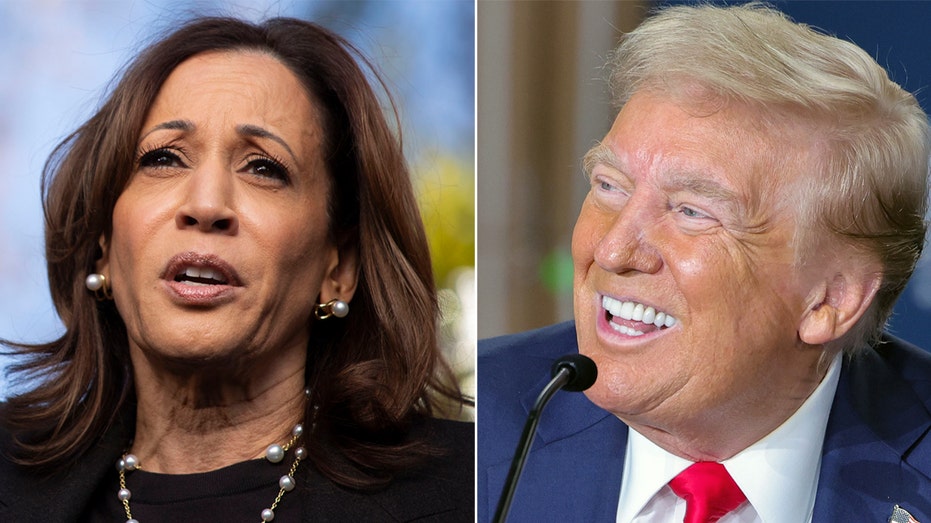
The Democratic Party is losing its edge over the GOP in the critical swing state of Pennsylvania, with Democrats changing their party affiliation at more than twice the rate of Republicans, according to state data released after voter registration ended Monday evening. A total of 9,088,583 registered voters were tallied across the state when the sign-up period ended at midnight on Monday. Registered Democrats maintained a lead over registered Republicans, at 3,971,607 registered Democrats to the GOP’s 3,673,783. More than 1.4 million voters are registered as third-party or independent voters in the Keystone State. Though the Democratic Party accounts for nearly 44% of registered voters compared to the GOP’s 40%, it has seen its advantage over Republicans dwindle this year. BIDEN’S OLD BACKYARD NOW A KEY PENNSYLVANIA BATTLEGROUND FILLED WITH ‘PURPLE’ VOTES In 2020, there were 9,090,962 registered voters across the parties in Pennsylvania, only slightly more than the 9,088,583 voters registered this cycle. President Biden won the state in 2020 by 1.17 percentage points. That year, Democrats had a larger margin of registered voters compared to their Republican counterparts, at 4.2 million to 3.5 million. The data show that Democrats had a registration advantage over Republicans by 685,818 voters during an election Biden won by 80,555 votes. The GOP has whittled down that lead this year to a 297,824 margin. When comparing registered voters this election year to 2020, Democrats face a net loss of 257,281 voters, while Republicans have a net gain of 428,537 registered voters. ‘BLUE WALL’ DEMOCRAT ALIGNS WITH TRUMP IN NEW PITCH TO VOTERS BEFORE ELECTION More than double the number of previously registered Democrats changed their party affiliation this cycle compared to the number of registered Republicans who left the party: 54,668 registered Democrats changed their party affiliation compared to 25,634 Republicans, Pennsylvania Department of State data shows. The data is broken down by county, with Philadelphia notably reporting 18,928 Democrats changed their party affiliation compared to just 3,401 Republicans doing the same. Bucks County, which sits outside of the City of Brotherly Love, reported 2,089 Democrats changed their party affiliation compared to 1,624 Republicans. In Allegheny County, home to the state’s second-largest city of Pittsburgh, 6,564 Democrats changed their party affiliation while 2,202 Republicans did the same. The registered voter data comes after reports surfaced that concerns were mounting within the Democratic Party that the Harris campaign is failing to effectively connect with voters in Pennsylvania. Poor campaign management and staffers lacking relationships with Democratic political leaders in the Keystone State are allegedly rocking the campaign, Politico reported last week. The outlet reported that Democrats are worried that the campaign’s state manager lacks an understanding of Philadelphia, the state’s largest city, while campaign staffers have allegedly not invited local Democratic politicians to events in the state, and have not effectively deployed surrogates. KAMALA HARRIS ‘HAS BECOME TOXIC’ FOR PENNSYLVANIA, TOP KEYSTONE STATE LAWMAKER SAYS Politico reported that it spoke with 20 Democratic politicians, allies and party leaders for the story, who reported they are restless over Harris’ campaigning efforts. “Our campaign is running the largest and most sophisticated operation in Pennsylvania history,” Harris’ national campaign manager Julie Chávez Rodriguez said in comment to Fox News Digital when asked about the report last week. “While Trump’s team still refuses to tell reporters how few staff they have in the state, we have 50 coordinated offices and nearly 400 staff on the ground.” “While the Trump campaign closed its ‘minority outreach offices,’ we invested in targeted advertising to Black and Latino voters starting in August of 2023 and have now spent more than any previous presidential campaign on outreach to these communities. The Vice President is also campaigning aggressively in Pennsylvania – spending 1 out of 3 days in the state in September.” Vulnerable incumbent Democratic Sen. Bob Casey made national headlines last week when he distanced himself from Democratic Party leaders and launched a campaign ad detailing how he “bucked Biden” and “sided” with former President Trump. The ad features a married couple – Republican Marygrace and her Democrat husband Joe – praising Casey as an “independent,” citing his support for Trump’s trade policies and efforts to “protect fracking” from the Biden administration. INEFFECTIVE PLANNING, LACK OF CONNECTIONS HAS DEMS ON EDGE IN ‘KEY’ BATTLEGROUND: REPORT “Our marriage – pure bliss! But on politics, we just don’t agree. Except for Bob Casey. He’s independent,” Marygrace says, with her husband chiming in, “That’s right!” “Casey’s leading the effort to stop corporate greedflation and price-gouging,” Marygrace continues. “Casey bucked Biden to protect fracking and he sided with Trump to end NAFTA and put tariffs on China to stop them from cheating. So in this house, we agree, it’s Bob Casey who’s doing right by Pennsylvania.” MCCORMICK SEIZES ON PENNSYLVANIA SENATE RACE GAP, LAYING BORDER BLAME ON CASEY Casey has served in the Senate since 2007, ultimately becoming a stalwart within the Democratic Party, voting on legislation Biden supported, for example, 98.5% of the time, according to FiveThirtyEight data. He is now facing his toughest re-election effort yet, as he squares up against Republican challenger Dave McCormick. The Fox News Power Rankings score the presidential contest in Pennsylvania as a toss-up, with the Senate race a lean Democrat designation. The Cook Political Report, this week, however, shifted the Senate contest from a leans Democrat race to a toss-up race, underscoring Casey’s difficult re-election battle. CLICK HERE TO GET THE FOX NEWS APP Pennsylvania is touted as the state that will likely determine the outcome of the general election on Nov. 5. A Fox News survey of Pennsylvania voters published late last month found Harris narrowly ahead of Trump by 2 points (50-48%) among registered voters, while the race is tied at 49% each among likely voters. Fox News Digital’s Chris Pandolofo and Brooke Singman contributed to this report. Get the latest updates from the 2024 campaign trail, exclusive interviews and more at our Fox News Digital election hub.
India, Pakistan extend Kartarpur Sahib corridor agreement for five years
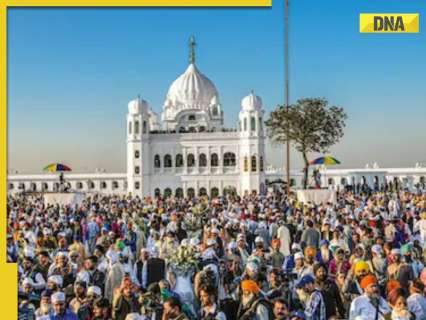
India and Pakistan extended the Kartarpur Sahib Corridor agreement for five more years, ensuring continued pilgrim access to Gurdwara Darbar Sahib.
Maharashtra Elections 2024: Shiv Sena releases 1st list of 45 candidates, CM Eknath Shinde to contest from….
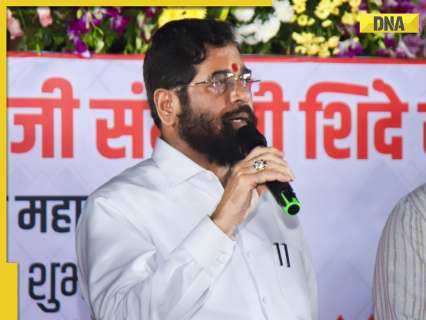
Sada Sarvankar to contest from Mahim against Raj Thackeray’s son Amit Thackeray.
A West Texas well that exploded has been sealed, cleanup will take months
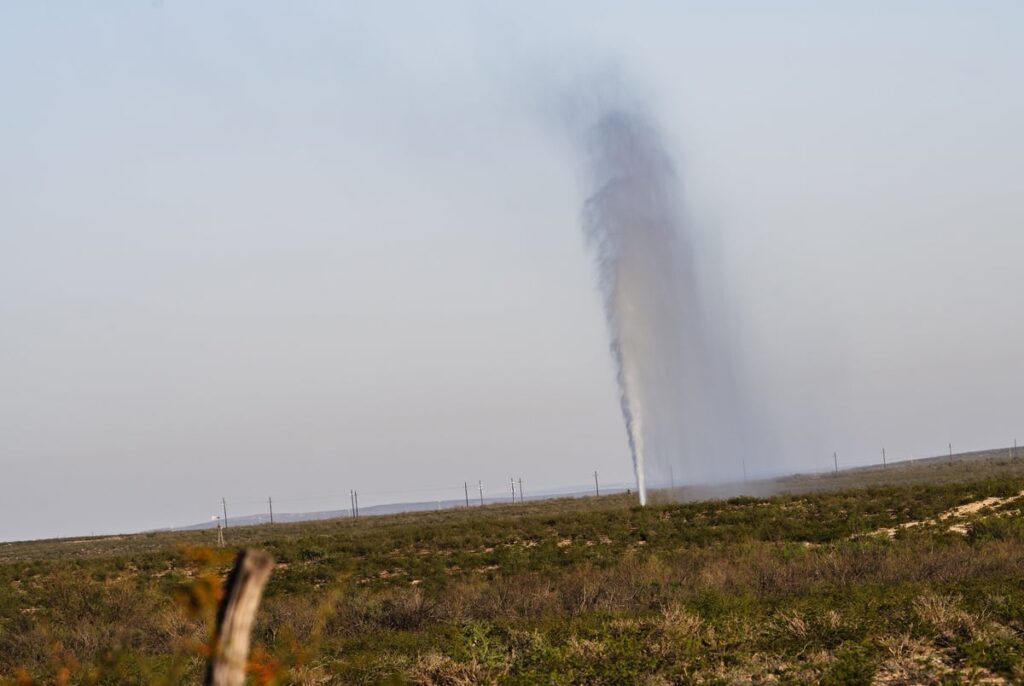
While residents smelled rotten eggs, the state’s environmental agency said it has not detected any air pollution.
Trump with slight edge over Harris in this crucial Western battleground: poll
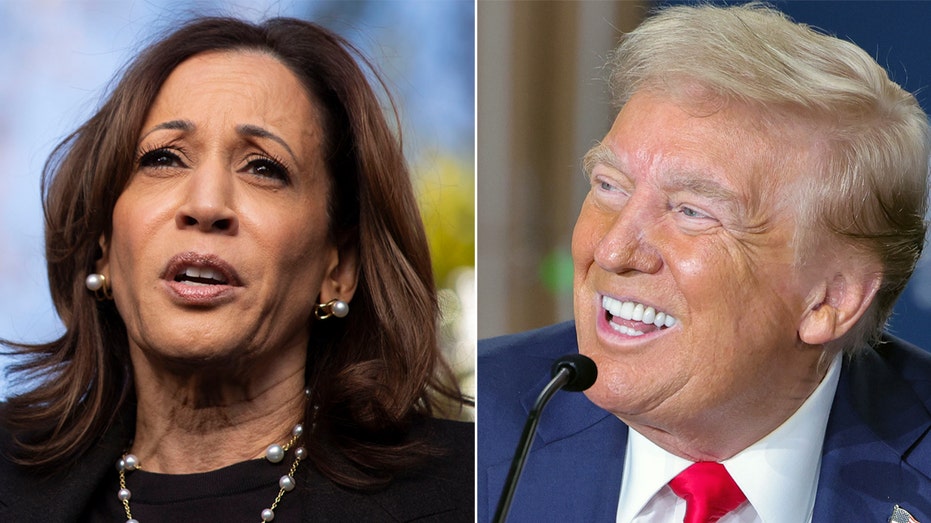
With two weeks to go until Election Day on Nov. 5, a new poll in swing state Nevada indicates a margin-of-error race between Vice President Kamala Harris and former President Trump. According to the survey by AARP, Trump edged Harris 49%-47% in a head-to-head match up for the state’s highly coveted six electoral votes. The Republican presidential nominee holds an even slimmer 47%-46% one-point margin over the Democratic Party standard-bearer in a full ballot with third-party candidates. The survey is the latest of likely voters to indicate a coin-toss race in Nevada. As he runs to win back the White House, Trump aims to become the first GOP presidential nominee to carry Nevada since President George W. Bush in his 2004 re-election victory. Trump narrowly lost the Silver State in both his 2016 White House victory and in his 2020 re-election loss to President Biden. CHECK OUT THE LATEST FOX NEWS 2024 ELECTION POWER RANKINGS The AARP survey, conducted Oct. 8-15 and released on Tuesday, indicates the former president holding a narrow advantage among independent voters. It also points to a large gender gap, with Trump up 18 points among men, while Harris leads women by 15 points. Recent polls in Nevada and across the nation indicate an erosion of support for Democrats among Latino voters, and according to the AARP poll, Trump enjoys a slight lower-single digit edge over Harris among those voters. HARRIS AND CHENEY TEAM UP FOR A BATTLEGROUND BLITZ Of note, the survey doesn’t point to a large education divide. “There is only a small educational attainment gap, with Harris up 6-points with voters with college degrees, and Trump up 5 among those without degrees,” the survey’s release highlights. The poll indicates Trump with a seven-point lead among voters 50+, and a four-point advantage among those age 65 and older. “With the presidential and Senate races so close, appealing to high-turnout older voters should be a major priority for all the campaigns,” AARP Nevada State Director Maria Moore emphasized. “If candidates want to win in Nevada, they should focus on the issues that matter to older voters, from protecting Social Security to supporting family caregivers and bringing down the costs of necessities like food and housing.” Nevada is one of seven swing states whose razor-thin margins decided Biden’s 2020 election victory over Trump and are likely to determine if Harris or Trump wins the 2024 White House race. The Silver State is not only a presidential battleground – it’s also home to a crucial Senate race that is one of a handful that will decide if the GOP wins back the chamber’s majority. According to the poll, Democratic Sen. Jacky Rosen holds a five-point 49%-44% advantage over Republican challenger Sam Brown. The AARP poll was conducted by the bipartisan polling team of Fabrizio Ward (Republican) & Impact Research (Democrat). The firms interviewed 1,368 likely voters in Nevada. The survey’s overall sampling error is plus or minus 3.5 percentage points. Get the latest updates from the 2024 campaign trail, exclusive interviews and more at our Fox News Digital election hub.
Trump, Harris campaigns make Pennsylvania most expensive battleground, spending $538M combined: report
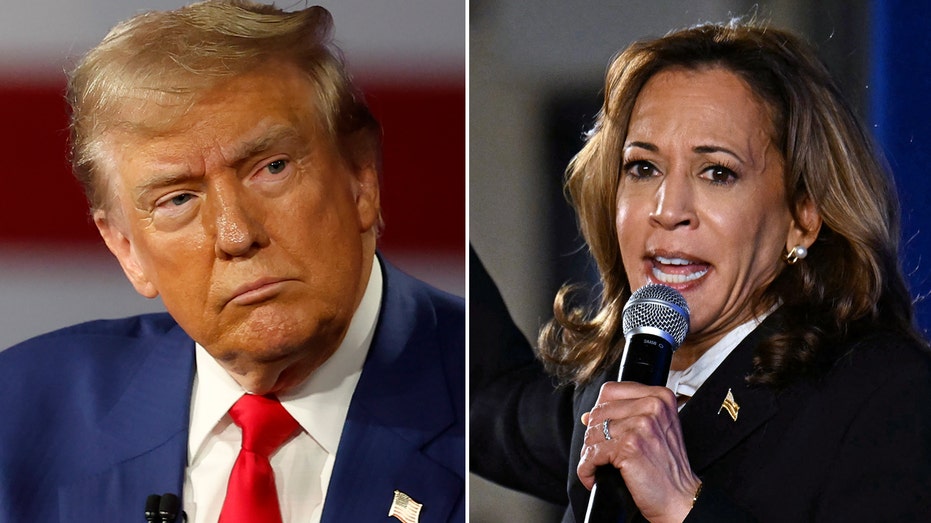
More than $538 million in advertising dollars spent by former President Trump and Vice President Harris’ presidential campaigns and their allies have been poured into the critical battleground state of Pennsylvania ahead of Election Day, according to a new report. The figure comes from an analysis published by the Philadelphia Inquirer on Tuesday. That makes Pennsylvania, which has 19 electoral votes considered critical to securing the presidency, the most expensive battleground state. According to the analysis, Democrats spent more than $294.7 million in Pennsylvania, and Republicans spent $243.6 million. Both campaigns and their respective allies spent about $185 million – or 52% – more collectively in Pennsylvania than the second most expensive swing state of Michigan, according to AdImpact. The top presidential candidates and their running mates have visited Pennsylvania 76 times since January, the Inquirer reported, though that jumps to 90 when including the stops President Biden made before he discontinued his re-election bid and endorsed Harris in July. JEWISH-AMERICAN GROUP URGES US CITIZENS IN ISRAEL TO VOTE AS ABSENTEE BALLOTS CAN IMPACT SWING STATES Most of those visits to Pennsylvania have happened since the beginning of August. Of Trump’s 25 campaign visits, 18 have been outside of Philadelphia and Pittsburgh, as the Republican nominee has focused on Rust Belt towns like Wilkes-Barre and Johnstown. In recent weeks, his strategy has shifted to the suburbs of Philadelphia in Montgomery County, as he and his running mate, Sen. JD Vance, R-Ohio, court more undecided voters in areas that can lean blue. “The blue-collar Trump voter, the union member Trump voter, the person who is concerned about the border Trump voter, the person concerned about his job in fracking, energy or manufacturing,” Trump senior adviser Tim Murtaugh told the Inquirer. “All of those people are Pennsylvania Trump voters.” KAMALA HARRIS ‘HAS BECOME TOXIC’ FOR PENNSYLVANIA, TOP KEYSTONE STATE LAWMAKER SAYS Harris has prioritized population hubs, making three-quarters of her visits to the state in Philadelphia and its suburbs and Allegheny County, which combined account for 44% of registered Pennsylvania voters. She and her running mate, Minnesota Gov. Tim Walz, have also paid visits to smaller towns. “The strategy has always been, throw the kitchen sink at campaigning everywhere and not taking any voters for granted,” Harris senior adviser Brendan McPhillips told the Inquirer. “Our unofficial motto is go everywhere, talk to everyone.” Biden for President and Harris for President have spent more than $123.7 million since January on Pennsylvania’s airwaves, while Democratic PACs and issue groups bought another $171 million worth of ads supporting Harris that will air until Nov. 5. Harris and her allies have focused on Philadelphia’s media market, outspending Trump and his allies on streaming, cable, digital and radio ads. Trump dropped more on broadcast buys, the Inquirer reported. Trump’s campaign spent $52.5 million on advertising in Pennsylvania, and super PACs supporting the president spent another $191.2 million in the battleground state.
Elon Musk quietly donates ‘very substantial’ amount to PAC to canvass Hispanic voters
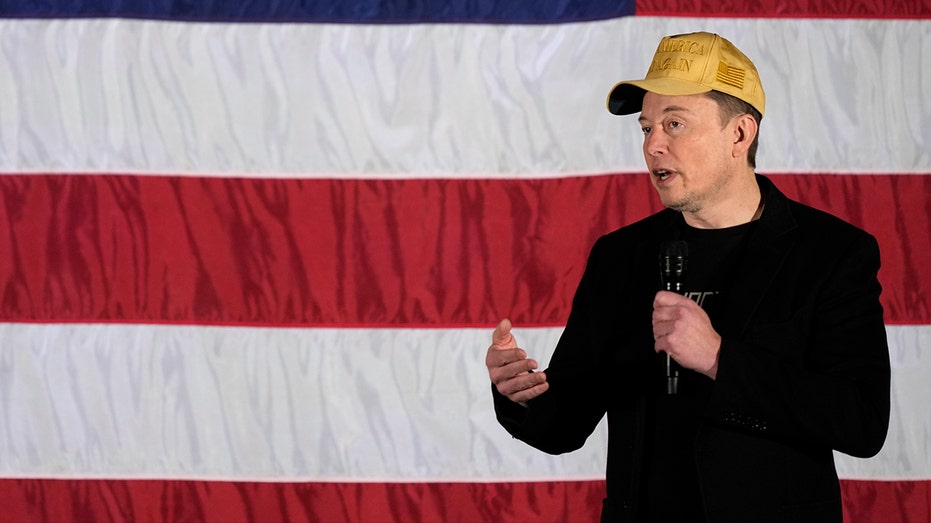
Tech billionaire Elon Musk has quietly donated a “very substantial” amount of his own money directly to a PAC that is canvassing Hispanic voters ahead of the 2024 presidential election, Fox News has learned. Musk donated to a PAC called The Hispanic Voters Alliance, which is canvassing voters in Arizona, California and Oregon to help Republicans up and down ballot. Fox News has also learned that the latest FEC filings for The Hispanic Voters Alliance will be released to the public on Thursday and will reveal the extent of Musk’s financial support. Musk’s donation to the PAC came from Musk directly and not through one of his PACs or organizations. The PAC has used the money in recent weeks to get out the Hispanic vote for Republicans. The PAC is associated with Rep. Tony Gonzales, R-Texas. Gonzales hosted Musk during the billionaire’s visit to the Texas border in Eagle Pass, Texas, last year. HERE’S HOW ELON MUSK’S $1M A DAY GIVEAWAY TO BATTLEGROUND VOTERS WORKS Musk has already made waves on the Pennsylvania campaign trail in support for former President Donald Trump’s re-election, including offering $1 million a day to swing-state voters who sign his political action committee’s petition backing the Constitution. Trump and Vice President Kamala Harris are neck and neck in a recent USA TODAY/Suffolk University Poll, with Trump at 44% and Harris at 45%. Harris, however, appeared to be losing ground among Latino and Black voters. ELON MUSK RESPONDS TO GOV. SHAPIRO’S COMMENT HIS SUPER PAC PETITION WAS ‘DEEPLY CONCERNING’ The new poll found Latino voters now back Trump by 49% to 38%. Black voters prefer Harris by 72% to 17%, but that 55-point edge is significantly less than the advantage Democrats traditionally enjoy. Trump has made inroads among Black and Latino voters in the 2024 race by courting men, as he campaigns on the economy and crime. Fox News’ Danielle Wallace contributed to this report.
How India and China pulled back from a border war — and why now
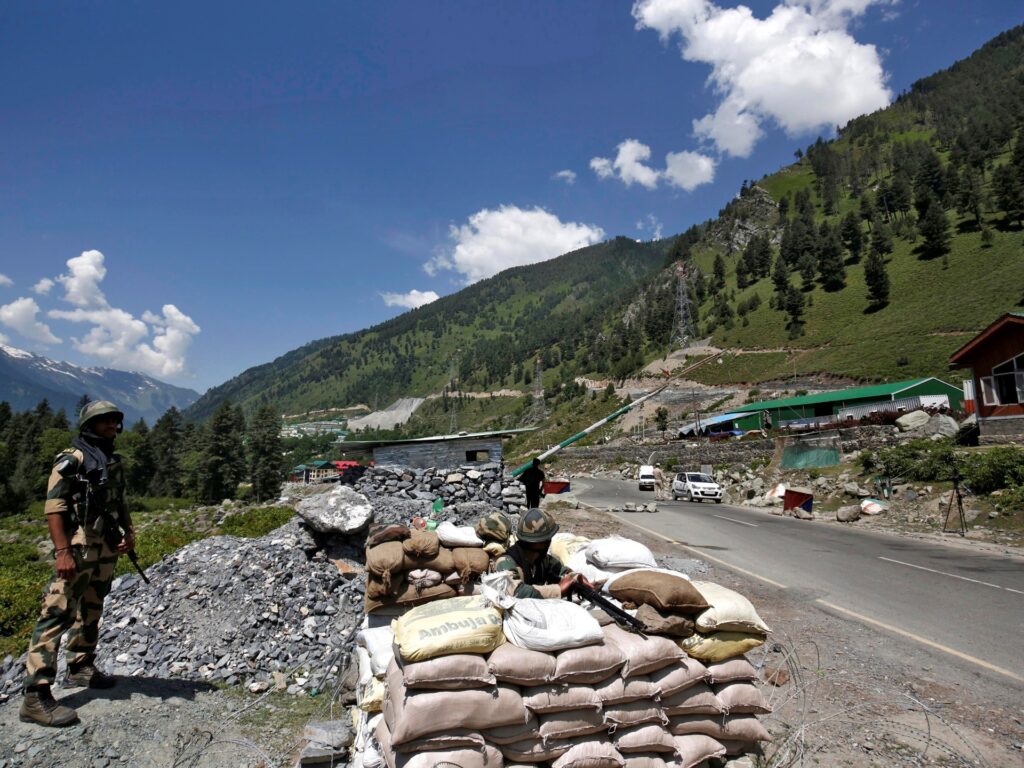
India and China have reached a deal to end a military standoff at their disputed frontier, four years after a deadly clash along their border in the western Himalayas plunged ties to their lowest point in decades. Indian External Affairs Minister S Jaishankar told an Indian TV channel on Monday that the agreement on border patrols signalled that “the disengagement process with China has been completed.” While the larger border dispute remains unresolved, the deal allows for the resumption of patrols along the border in the Ladakh region by soldiers of both countries – allowing them to underscore their respective territorial claims while ensuring that the other side is following the agreement arrived at on Monday. The announcement was made on the eve of Indian Prime Minister Narendra Modi’s visit to the Russian city Kazan for the BRICS summit, in which China is also participating. The pact paves the way for improved political and business ties between the Asian giants, analysts say. It could also clear the path for a potential meeting between Modi and Chinese President Xi Jinping, which would be the first since 2020. What is in the deal? The agreement has not been made public, and few details are known. Indian Foreign Secretary Vikram Misri said the pact is aimed at the “disengagement” of troops at the Line of Actual Control, or LAC, which separates Chinese and Indian-held territories. The LAC stretches from Ladakh in the west to India’s eastern state of Arunachal Pradesh, parts of which are also claimed by China. It spans 3,488km (2,167 miles). As its name suggests, the LAC divides the areas of physical control rather than territorial claims. Misri did not specify whether the deal would mean the withdrawal of the tens of thousands of additional soldiers stationed by the two countries in the Ladakh region. China on Tuesday confirmed the deal on military patrols along the frontier but did not explain whether the pact covered the length of the border or just hotspots that have seen clashes. A senior military officer told the Reuters news agency that both sides would pull back their troops a little from current positions to avoid face-offs but would be allowed to patrol according to a schedule that is being worked out. Monthly review meetings and regular monitoring of the contested areas by both countries would ensure there are no violations, he added. Manoj Joshi, an analyst at the New Delhi-based Observer Research Foundation, told Al Jazeera the lack of information provided by authorities suggests negotiations may be ongoing. “If there is a formal agreement and that agreement is publicised, then we may [have a clearer idea of] what is going to happen,” he said. Many questions remain unanswered, including whether “buffer” zones that had been demarcated along the LAC and which neither side is supposed to patrol will now be abolished, he said. How did we get here? India and China have disputed their border for the past seven decades. The two countries fought a brief and bloody war over the demarcation of the border in 1962. India suffered a humiliating defeat and lost a chunk of territory in Aksai Chin, in the extreme northeast of Ladakh, which has remained a point of contention between the two countries. Diplomatic relations recovered after a series of border agreements in the 1990s. While the 1993 and 1996 agreements are often regarded as milestones, the border arrangement between India and China — which allowed them to avoid any casualties along the border for more than half a century after 1962 — has increasingly come under stress in recent years. Their troops faced off in local incidents in 2013, 2014 — when Xi was visiting India — and 2017. In 2019, India repealed Article 370 of its constitution, which guaranteed a measure of autonomy to Indian-administered Kashmir, which also included the disputed areas of Ladakh. China saw India’s move as unilaterally affecting its territory and denounced the move at the United Nations Security Council. But the 2020 clash — and the resulting deaths — took the relationship to a breaking point. Michael Kugelman, director of the Washington, DC-based Wilson Center think tank’s South Asia Institute, said this week’s deal is significant but its importance should not be overstated. “It does not end the border dispute,” Kugelman told Al Jazeera. “This is an agreement that will allow things to return to how they were in Ladakh before that crisis.” “It does not appear to call for troop disengagement in the areas where mobilisations had taken place during the Ladakh crisis,” Kugelman said. “That’s why we need to be cautious about this new agreement.” What have been key moments in the India-China relationship since 2020? June 2020: Twenty Indian soldiers and four Chinese soldiers were killed in hand-to-hand fighting with clubs and staves in the Galwan Valley in Ladakh in the first deadly clashes in nearly 60 years. The deaths triggered outrage and street protests in India. The heightened tensions between the two nuclear-armed countries drew international concerns with the UN urging both sides “to exercise maximum restraint”. New Delhi restricted investments from China, banned dozens of popular Chinese mobile apps, including TikTok, and severed direct flights. The number of banned Chinese apps eventually rose to 321. January 2021: Indian and Chinese soldiers engaged in what the Indian army described as a “minor face-off” along their frontier in the northeast Indian state of Sikkim. December 2022: Minor border scuffles broke out in the Tawang sector of India’s northeastern state of Arunachal Pradesh, parts of which are also claimed by China. Beijing accused Indian forces of obstructing a routine patrol while New Delhi said Chinese soldiers encroached upon Indian territory and tried to “change the status quo”. August 2023: Modi and Xi agreed to intensify efforts to disengage and de-escalate when they met briefly on the sidelines of the BRICS summit in Johannesburg. June: Jaishankar met Chinese Foreign Minister Wang Yi on the sidelines of the Shanghai Cooperation Organisation summit in
Video shows Israeli strike collapse multi-storey building in Beirut

NewsFeed Video captured the moment an Israeli missile attack collapsed a multi-storey apartment building in southern Beirut. Published On 22 Oct 202422 Oct 2024 Adblock test (Why?)
Russia’s Putin welcomes world leaders for three-day BRICS summit
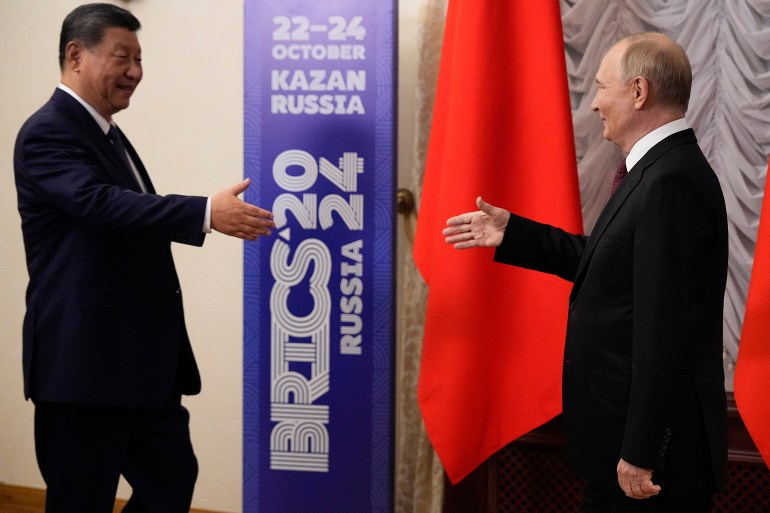
China’s Xi Jinping, India’s Narendra Modi and other global leaders have arrived in the Russian city of Kazan for a summit of the BRICS bloc of developing economies that the Kremlin hopes to turn into a rallying point for defying what some see as the Western liberal order. For Russian President Vladimir Putin, the three-day meeting that got under way on Tuesday also offers a powerful way to demonstrate the failure of United States-led efforts to isolate Russia on the international stage over its 2022 invasion of Ukraine. Kremlin foreign affairs adviser Yuri Ushakov touted the summit as “the largest foreign policy event ever held” by Russia with 36 countries attending and more than 20 of them represented by heads of state. BRICS – which initially comprised Brazil, Russia, India, China and later South Africa – has expanded rapidly to embrace Iran, Egypt, Ethiopia, the United Arab Emirates and Saudi Arabia. Turkey, Azerbaijan and Malaysia have formally applied to become members, and a few other countries have expressed interest in joining. Observers see the BRICS summit as part of the Kremlin’s efforts to showcase support for it on the international stage amid spiralling tensions with the West and to help expand economic and financial ties. Proposed projects include the creation of a new payment system that would offer an alternative to the global bank messaging network SWIFT and allow Moscow to avoid Western sanctions and trade with its partners. Putin is set to hold about 20 bilateral meetings on the sidelines of the summit, including Tuesday’s encounters with Chinese President Xi, Indian Prime Minister Modi and South African President Cyril Ramaphosa. Putin meets fellow BRICS leaders Xi told Putin there was a “profound friendship” between their two countries. “The world is undergoing profound changes unseen in a century, and the international situation is chaotic and intertwined,” Xi said. China and Russia “have continuously deepened and expanded comprehensive strategic coordination and practical cooperation”, he added. Ties have “injected strong impetus into the development, revitalisation and modernisation of the two countries”, the Chinese leader said. They have “made important contributions to upholding international equity and justice”, he added. Xi and Putin announced a “no-limits” partnership weeks before Russia invaded Ukraine in 2022. They had met at least two other times this year, in Beijing in May and at a Shanghai Cooperation Organisation summit in Kazakhstan in July. Russian President Vladimir Putin meets with Chinese President Xi Jinping on the sidelines of the BRICS summit in Kazan, Russia [Alexander Zemlianichenko/Reuters] Russia’s cooperation with India has also flourished as New Delhi considers Moscow a time-tested partner since the Cold War era despite Russia’s close ties with Indian rival China. Western allies want India to be more active in persuading Moscow to end the war in Ukraine, but Modi has avoided condemning Russia while emphasising a peaceful settlement. Modi, who last visited Russia in July, said this visit reflects the close friendship between the countries. Speaking at the start of his meeting with Putin, he also reaffirmed New Delhi’s push for peace in Ukraine. Putin hailed what he described as a “privileged strategic partnership” between Russia and India. Ramaphosa, who has also urged an end to the conflict, praised Moscow as a “valued ally” and friend in his meeting with Putin. “We continue to see Russia as a valued ally, as a valued friend, who supported us right from the beginning: from the days of our struggle against apartheid, right through to now,” Ramaphosa said. On Thursday, Putin is also set to meet with United Nations Secretary-General Antonio Guterres, who will be making his first visit to Russia in more than two years. Guterres has repeatedly criticised Russia’s actions in Ukraine. Adblock test (Why?)
